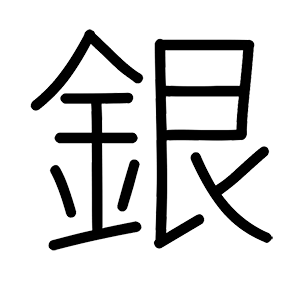An Unbranded Possibly VANCO Floral Engraved Silver Pen c. 1930s
by Jim Mamoulides, August 25, 2023
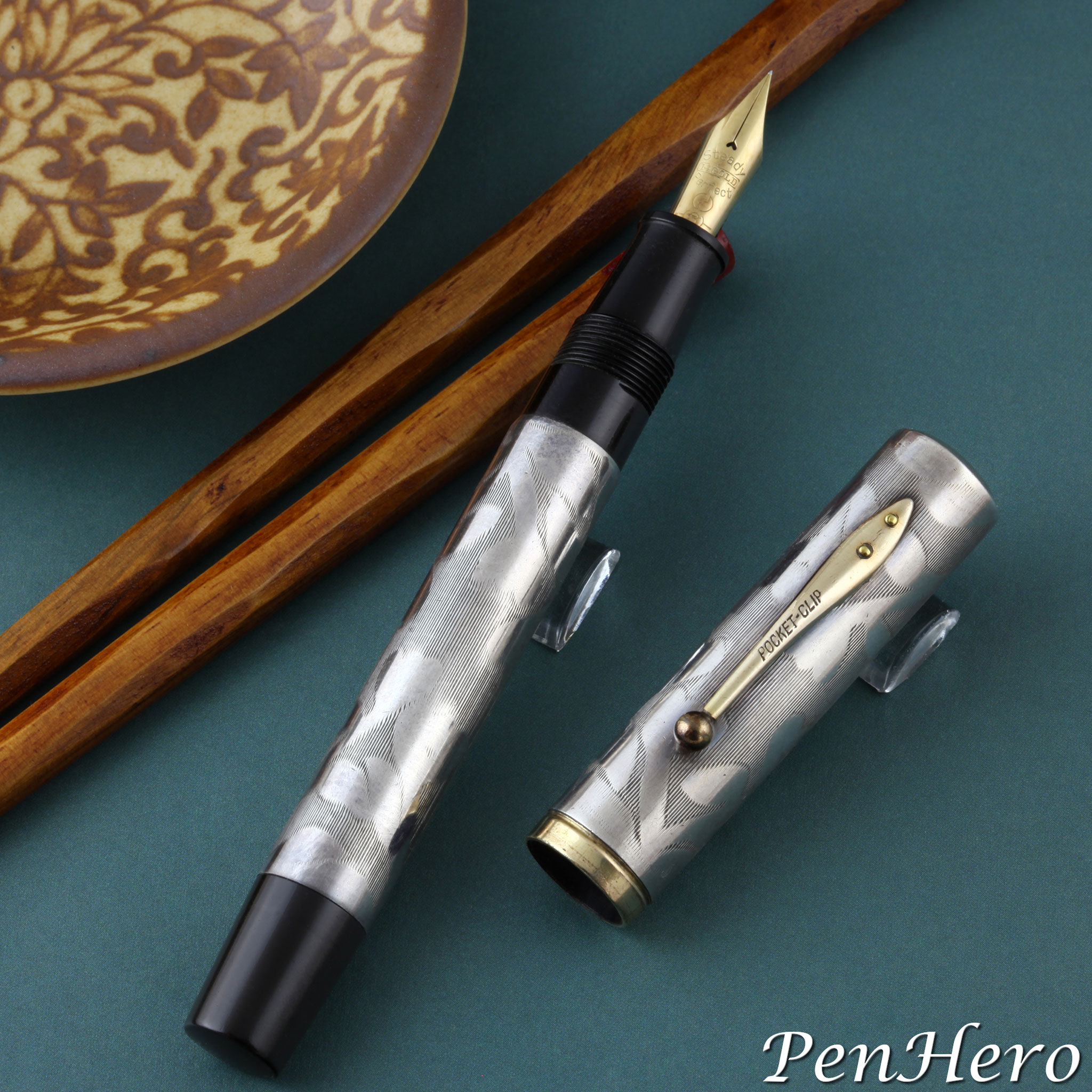 An unbranded Japanese engraved silver fountain pen c. 1930s
An unbranded Japanese engraved silver fountain pen c. 1930s
Fine Work by an Unknown Jeweler
I go through a fundamental set of questions whenever I approach writing about a pen. Who made it? What is it made of? When was it made? Where was it made? Why was it made? And, how was it made and how does it work? Sometimes the answers come years after I started working on it. Sometimes I run across a pen where I am just unable to get all the answers. This is one of those times. Since I reached a stopping point, I decided to write what I know and hope that a collector will contact me and say, "I have more details about that pen!"
This is a Japanese sterling silver flat top eyedropper fountain pen with a Steady brand nib. The flat top design, with a black hard rubber end, and riveted gold filled ball end clip, stamped POCKET-CLIP, strongly indicate it was made at some time in the 1930s. It’s about 5 1/16 inches long with a flowing hand engraved floral design that runs the length of the cap and barrel. The nib has post World War II Japanese Industrial Standards (JIS) markings, and since it is a gold nib, it's probably a replacement added in the mid to late 1950s. Gold was a restricted wartime metal in Japan beginning in 1937. The gold band at the cap lip appears to be plated directly on the silver as there is no rolled gold marking.
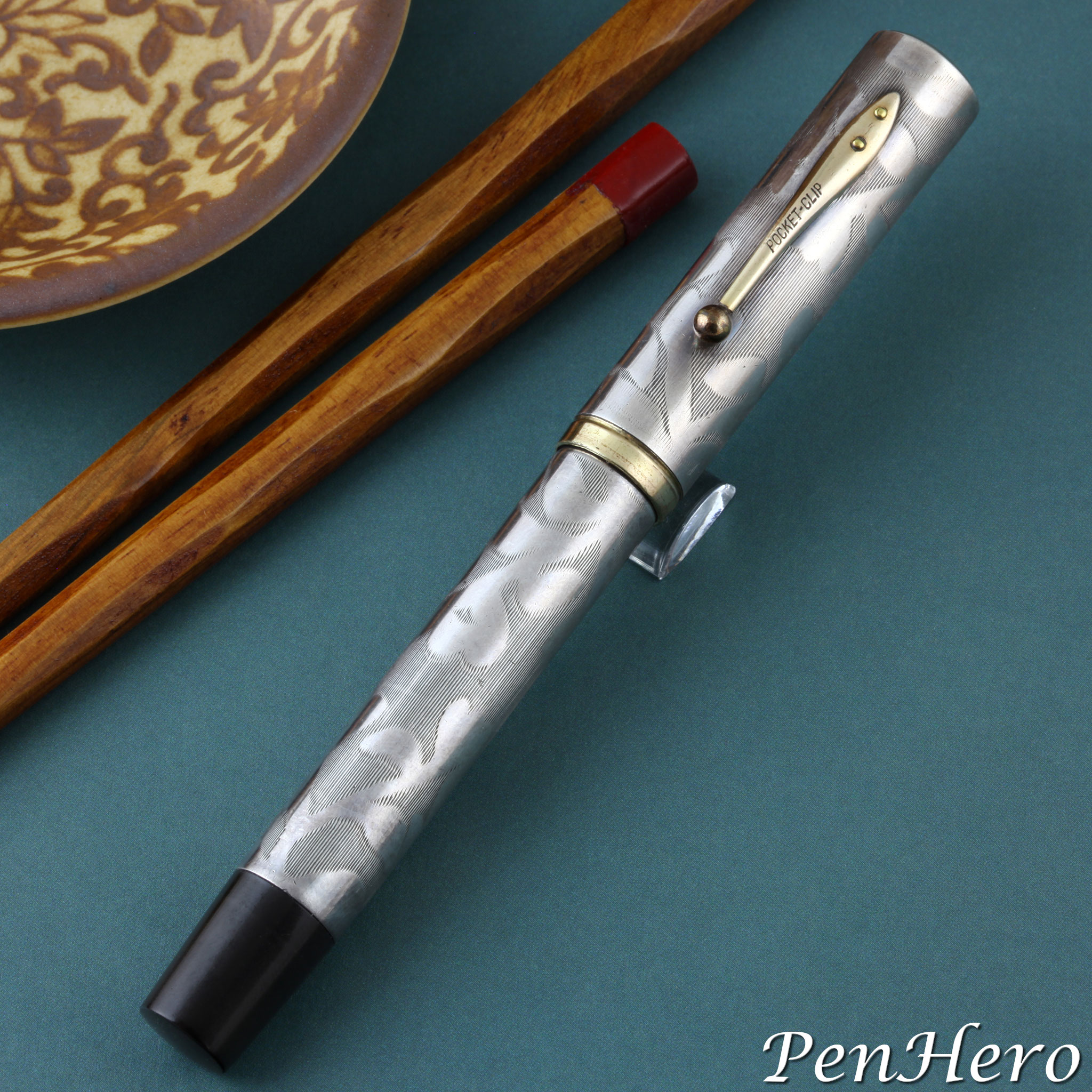 An unbranded Japanese engraved silver fountain pen c. 1930s
An unbranded Japanese engraved silver fountain pen c. 1930s
The artwork is executed with engraved straight lines, running lengthwise on the cap and barrel, where the unengraved areas reveal a flower and leaf design. The pen maker and jeweler artist are unknown as the pen and artwork are unsigned. The only marking anywhere on the pen is SILVER stamped on the cap top. It may have been the combined work of a jewelry shop silversmith and pen maker, who then used subcontracted parts such as the clip, nib and feed to finish the pen.
Who made this pen? I have photographed three other nearly identical pens, each with different engraving and each had different nibs. One had a VANCO maker's mark on the top of the cap. The others, like this one, had no makers marks. VANCO had a relationship with the Shobido Silver Store in Osaka and both were owned by members of the Eto family. It's possible they are all VANCO pens, but it's not absolutely certain as VANCO was very consistent in signing their work with their trademark. It's possible VANCO made them for the Shobido Silver Store, which would explain no VANCO marks. I just don't have the data to sort that out.
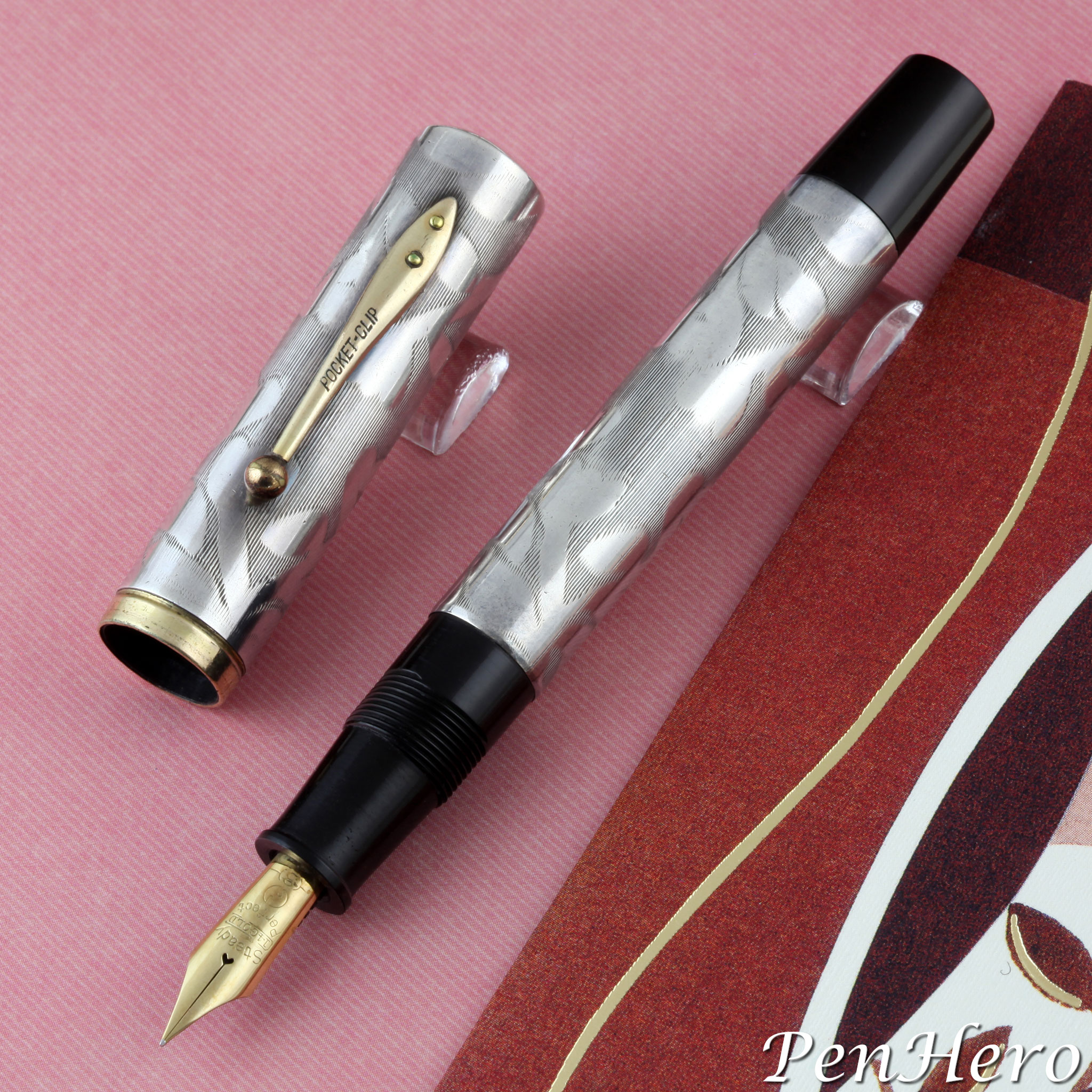 An unbranded Japanese engraved silver fountain pen c. 1930s
An unbranded Japanese engraved silver fountain pen c. 1930s
Japanese Industrial Standards (JIS)
Many Japanese pre-war pens had gold nibs, but by 1937 gold was restricted from commercial use in Japan and pen nibs were sometimes sold for the gold content and replaced with stainless steel nibs. There are also cases after the war where nibs were replaced with post war types, as likely happened with this pen.
Japanese Industrial Standards (JIS) for nibs were established in 1954 and any nibs made from that period forward will be marked with the JIS symbol and in many cases a number. This 14 karat gold nib is stamped Steady over 14 GOLD over Perfect over the JIS symbol over 3. “Steady” and “Perfect” were trademarks used by Kabutogi Ginjiro, a master nibmaker of that era. Kabutogi Ginjiro also used the mark “GK” and his nibs appear on several different makers pens.
 An unbranded Japanese engraved silver fountain pen c. 1930s
An unbranded Japanese engraved silver fountain pen c. 1930s
Definitely Something Special
I don’t know if this was a production or custom pen, so in this case there will be no identification guide and features section. I don't read Japanese well and over the five years since I photographed this pen I've never seen another, nor a reference mentioning it, nor the same engraving. Because it was photographed for a print article on Japanese pens, I was not able to test write with it, so there will be no Performance section.
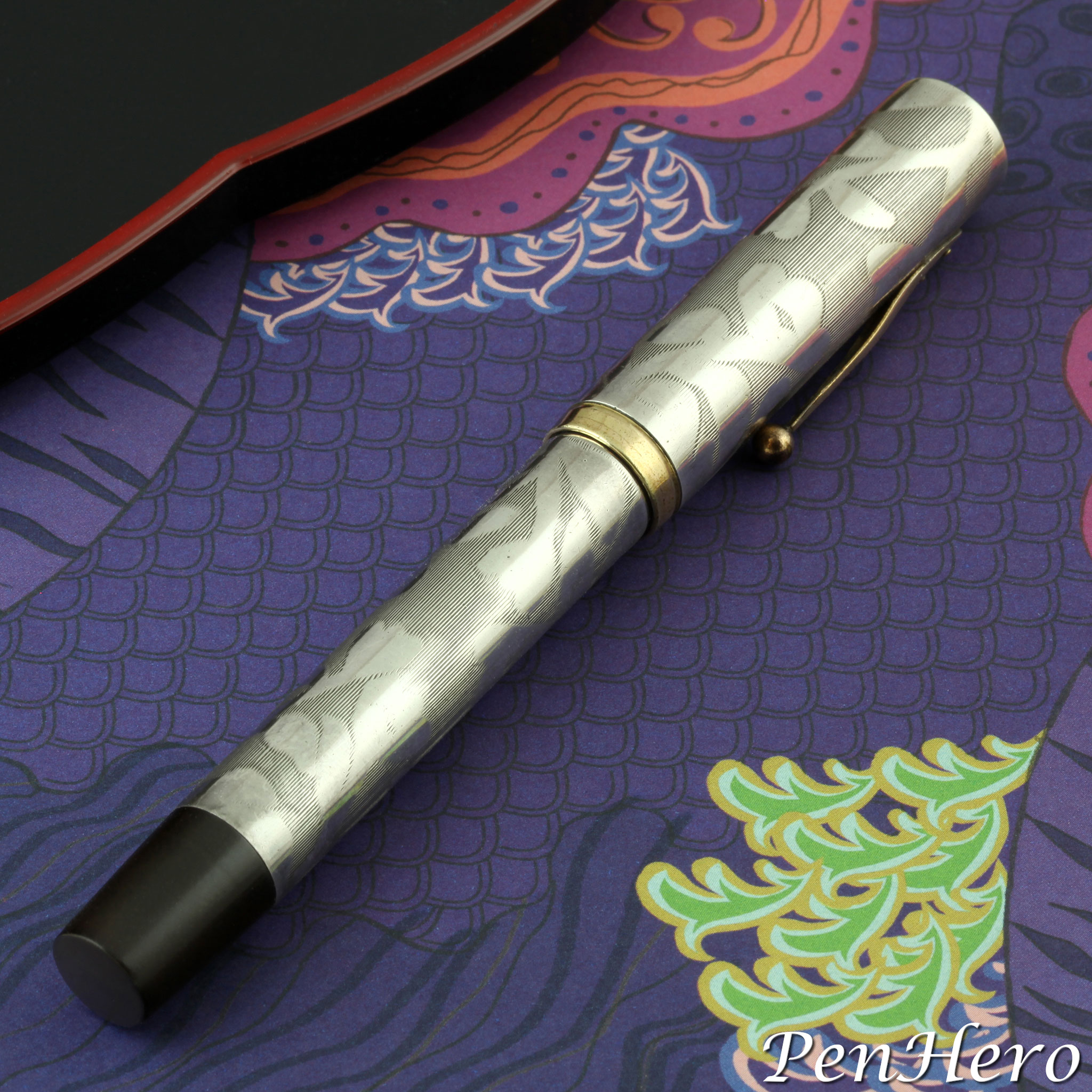 An unbranded Japanese engraved silver fountain pen c. 1930s
An unbranded Japanese engraved silver fountain pen c. 1930s
The fit and finish is excellent as is the engraving work. Though the artwork shows up quite strong in the photos, in person it is actually very subtle. It has the look of a jeweler made object more than a factory pen, and I suspect it could have been made completely by one shop with a local jeweler doing the engraving on the silver parts and then finishing the pen in house. Maybe it was a commissioned pen, thus the lack of makers marks. Who knows? This is a special pen and I’ve never seen another one like it. Another fine addition to any Japanese pen collection.
References
Las Danitrio Japonesas, November 6, 2016, Crónicas Estilográficas, © Copyright 2010-2023 Bruno Taut
Onoto Type by Sakai Eisuke, March 22, 2017, Crónicas Estilográficas, © Copyright 2010-2023 Bruno Taut
On Ban-ei Nibs, June 16, 2017, Crónicas Estilográficas, © Copyright 2010-2023 Bruno Taut
La Visconti Giapponese, January 22, 2018, Crónicas Estilográficas, © Copyright 2010-2023 Bruno Taut
Ohashido (I), January 17, 2019, Crónicas Estilográficas, © Copyright 2010-2023 Bruno Taut
From Kamakura to Choshitsu, September 30, 2020, Crónicas Estilográficas, © Copyright 2010-2023 Bruno Taut
On Ban-ei Nibs (II). 50, 60 & GK, June 29, 2021, Crónicas Estilográficas, © Copyright 2010-2023 Bruno Taut
On Ban-ei Nibs (III). Family Portrait, July 3, 2021, Crónicas Estilográficas, © Copyright 2010-2023 Bruno Taut
Fountain Pens of Japan by Andreas Lambrou and Masamichi Sunami, 2012 Andreas Lambrou Publishers Ltd. Epping, Essex, UK, pages 124-127
Interact
Comments on this article may be sent to the author, Jim Mamoulides


